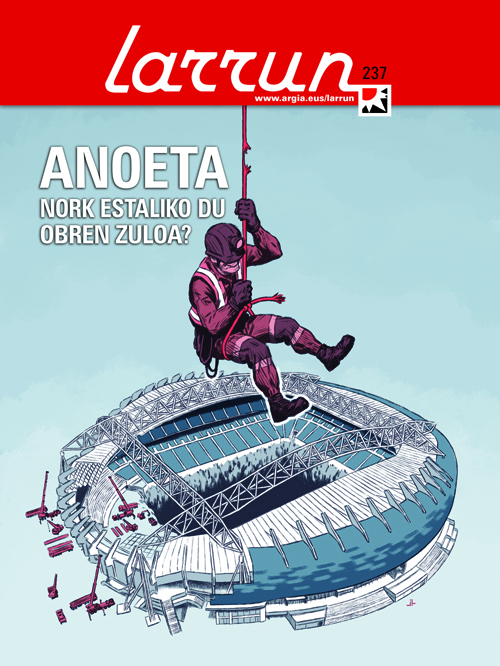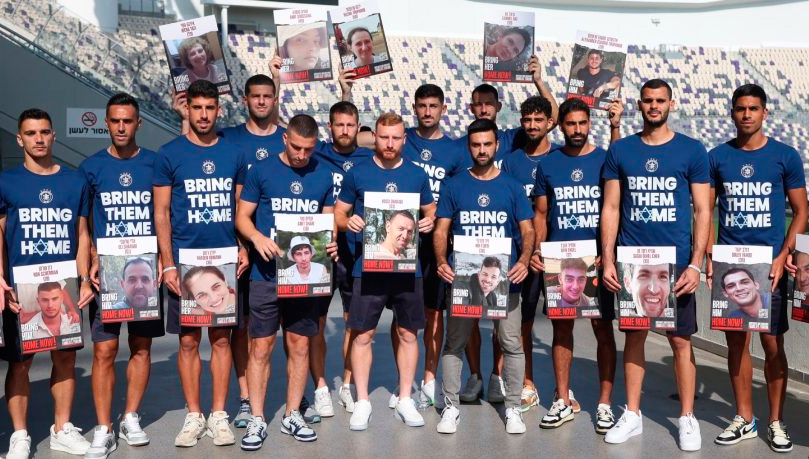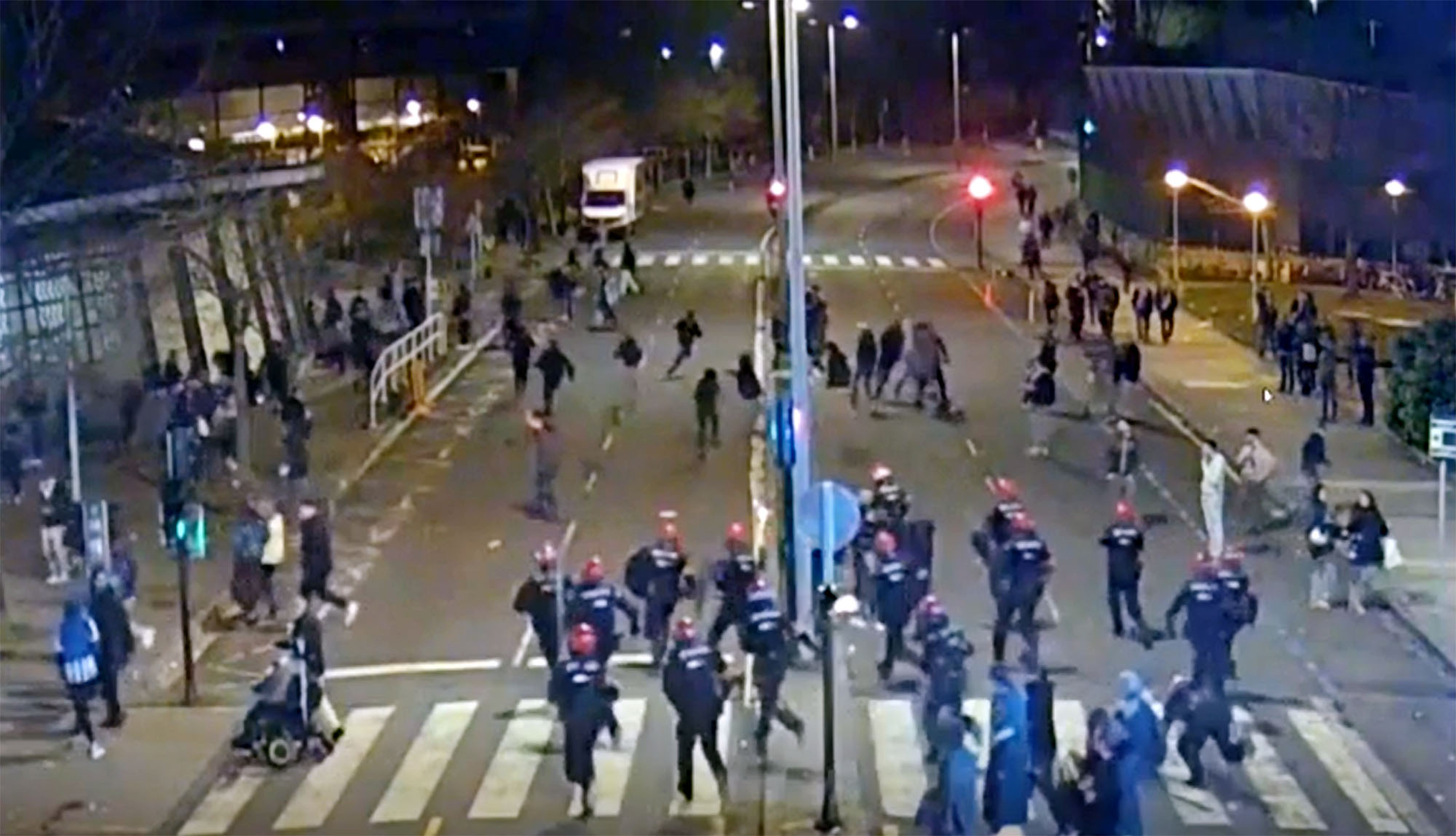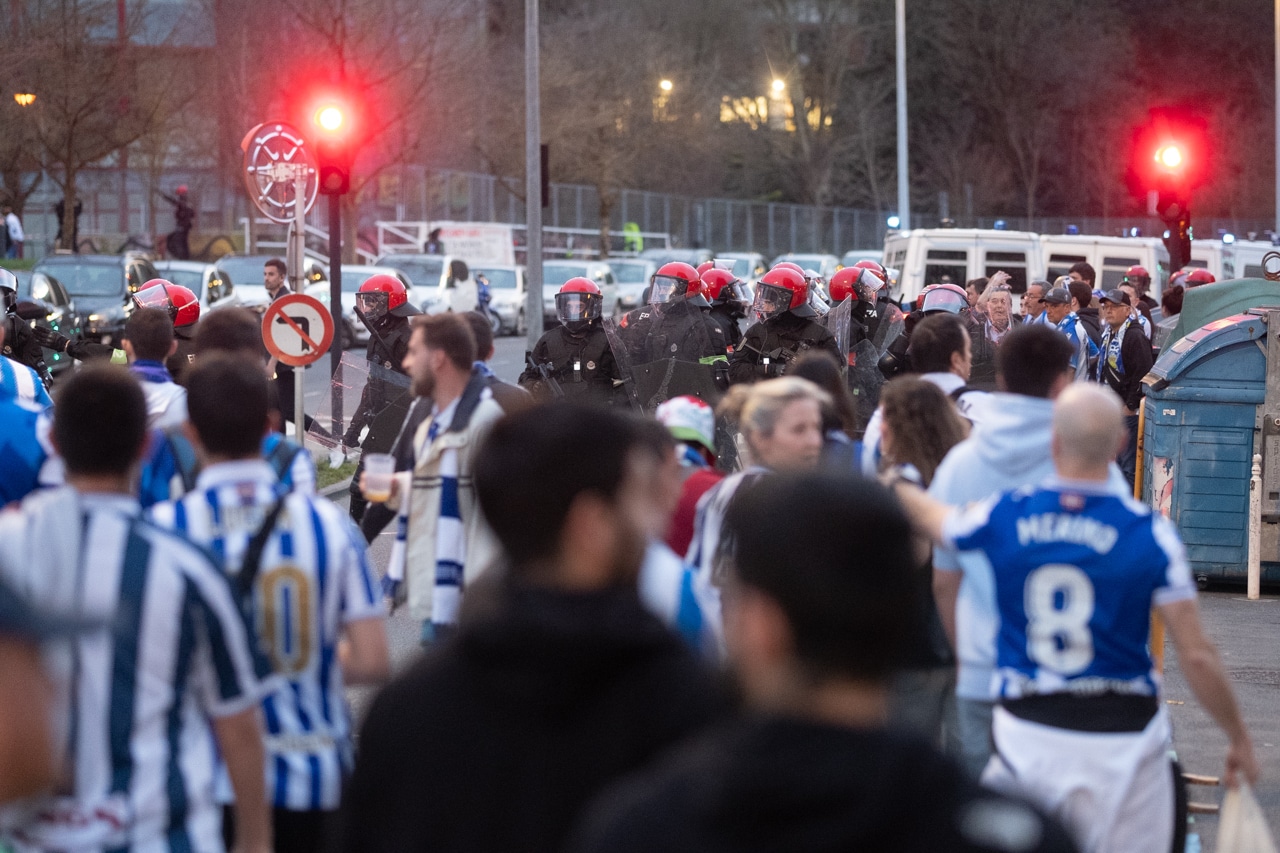Goal of politicians and entrepreneurs in the field of fraud
- The Anoeta stadium, opened in 1993, is dedicated to remodeling works 25 years later and is dedicated to restoration. A budget of EUR 50 million was approved in 2016, and despite the fact that the figure has risen to EUR 60 million, to carry out this type of work much more money is needed, taking as a reference the cost of other projects. So what coins will this work of mercury be paid for, far below market prices? The Construction Officer of the ELA Union, Igor San José, has carried out a documented monitoring of the work, and after denouncing the infringements, the resolutions of the Labour Inspectorate and the Social Security ratify that the extreme working conditions, the falsification of documentation and the illegal disposals of workers have been frequent in Anoeta. We will know all of them in this LARRUN, after giving the data of the 25 years of running.
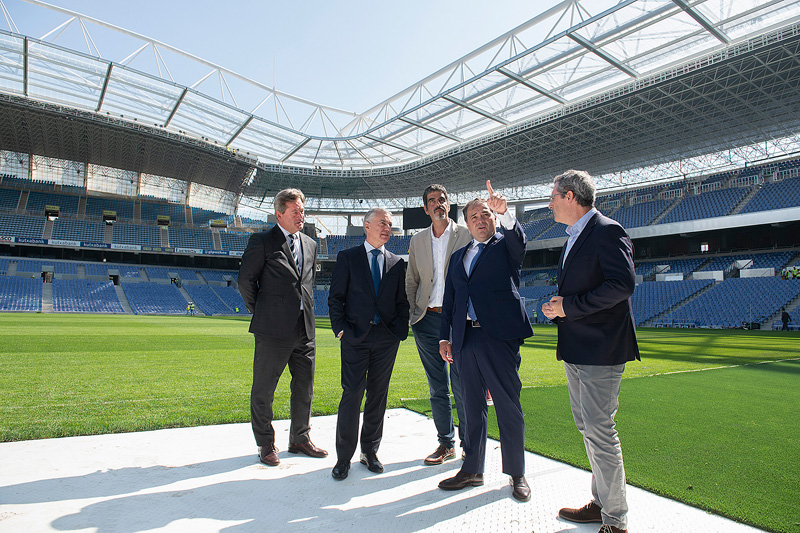
The Estadio de Anoeta, inaugurated in 1993, has as protagonists works of remodeling that, 25 years later, will exceed the EUR 48 million invested at the time. It is not surprising, therefore, that political decision-makers point out that it will be almost a “new” stage. La Real wants to clear the track of athletics that for so many years “has done nothing but hinder” and bring the seats to play, revive the atmosphere that was in the form of cold, largely driven by the hobby that has brought Aitor Zabaleta to the stage of animation. However, this cannot be sufficient to justify a work of size. Why increase the number of seats from 32,000 to almost 40,000, when the Anoeta matches barely exceed the barrier of 25,000 viewers? What kind of juggling will the club make to attract new amateurs and stop the number of subscribers going down? Many of the Gipuzkoans say that the transfer corresponds to the Real, that the club will have to see what is best for him and that he has the right to manage the stadium as he wins, because he is the one who pays most of the renovation cost. Is that true? Will the hole that will leave an “official” expenditure of EUR 60 million be covered almost entirely by the club?
The ELA trade union has already denounced on numerous occasions before the start of the works that the budget that has risen over time conceals another reality. “Those who are going to plug the hole are the workers and the public box,” explains Igor San José, who is responsible for the construction of the union: “Precariousness and fraud are the foundation of the project.” The UTE Anoeta Zelaia, formed by the companies Moyua and Altuna and Uria, was in charge of awarding most of the project (90%), through a process without competition that has generated mistrust, but the main responsibility for the irregularities is the company Anoeta Kiroldegia, formed by the City Council of Donostia. But before we go deeper into it, we're going to go back in time thinking that data from recent years on Anoeta can help us understand the situation.
Withdrawal of athletics tracks, an ancestral desire
The Anoeta stadium was opened in 1993. It had 32,000 seats and its construction and remodeling had 48 million euros. Of this amount, 85% corresponded to public institutions: The City Hall of Donostia-San Sebastián had 18 million, the Basque Government had 13 million, the Provincial Council of Gipuzkoa had just over 10, the Higher Council of Sports (CSD) had 3.6 million, and the Real Sociedad had 3 million. The facilities are managed by the City Hall through the public society Anoeta Kiroldegia.
.jpg)
The athletics tracks surrounding the camp almost since the opening day have been a source of controversy and, seeing that for years they have hardly been used, a request for withdrawal from the area for the corridors has been made from some sectors, as according to them, bringing the stands closer to the playing field, the atmosphere of the old Atotxa would recover. However, due to the outbreak of the crisis or the eyes of the institutions towards San Mamés Barria – as interpreted from the surroundings of San Sebastián – the project could not proceed until the Real announced that most of the reform works would be financed by the club.
In August 2016, the agreement between the Sports Club of Anoeta (Eneko Goia) and the Real Sociedad (President Jokin Aperribay) was signed for the renewal of the stadium “committed to citizenship”, with the intention of finishing the works in autumn 2019. In fact, the project envisages that the stadium will have a capacity of 42,000 locations, although 39,500 seats will be enabled for fans to see the "more comfortable" matches by extending the space between them, as explained by the Real. The figure seems too high when considering the group's subscribers and the number of viewers going to Anoeta (see Tables 1 and 2 at the end of the report).
EUR 50 million, 60 million, 70 million…
According to the agreement signed in August 2016 between the Polideportivo de Anoeta and the Real Sociedad, the total budget of the project (without VAT) amounts to EUR 50.7 million: Most of the Anoeta stadium would be for remodeling works (44 million), and the remainder for mini-stadium (2.8 million) and other buildings and institutions (Ernest Lluch Cultural Center, Kirol Etxea, Guipuzkoan Football Federation…).
The  Real Sociedad would contribute EUR 36 million, the Basque Government EUR 10 million and the Provincial Council of Gipuzkoa EUR 4 million. As for the Real, it would direct 24 million to works and another 12 to the City Hall of San Sebastian as loans, as a fee for the use and exploitation of Anoeta. In return, the period of operation of the stadium has been extended to the Real Sociedad from 2033 to 2067. Four of the five parties represented in the City Hall (PNV, PSE, Bildu and pp) were in favour of the project, while one (Irabazi) voted against.
Real Sociedad would contribute EUR 36 million, the Basque Government EUR 10 million and the Provincial Council of Gipuzkoa EUR 4 million. As for the Real, it would direct 24 million to works and another 12 to the City Hall of San Sebastian as loans, as a fee for the use and exploitation of Anoeta. In return, the period of operation of the stadium has been extended to the Real Sociedad from 2033 to 2067. Four of the five parties represented in the City Hall (PNV, PSE, Bildu and pp) were in favour of the project, while one (Irabazi) voted against.
Eneko Goia, Mayor of San Sebastian and President of the Sports Association of Anoeta, announced on 11 October 2016 that the representative of Irabazi on the board of directors of society, Loïc Alejandro, would be dismissed – with the votes of PNV and PSE – “for opposing the remodeling of the stadium and for the damage that his performance has caused to the Polieta.” The reason for this is that Irabazi's appeal to the Administrative Body for Contractual Remedies of the Basque Government (RLC), which was partially accepted, made it necessary to amend the specifications and delayed the work.
Over the months, these first EUR 50.7 million have been growing and, according to data published in September, the cost of the works will exceed EUR 60 million (see Table 4). The Irabazi party denounces that the rise evidences the lack of information on real figures, and the ELA union recalls what happened in the case of the San Mamés Barria stadium: “It was made in EUR 150 million, at a cost of EUR 225 million, at the expense of precarious working conditions, excessive working hours and rhythms, and EUR 7.5/hour, even lower, at the expense of illegal wages.”
However, the figure is a continuous dance. At the shareholder meeting on 11 November, the President of the Real Sociedad, Aperribay, announced that the club will not contribute EUR 36 million, but will contribute EUR 46 million for several improvements related to Anoeta, to which must be added the EUR 8 million for the Zubieta facility. 54 million therefore. We have told San José that we are delighted with the figures and have responded that everything is a little confusing or being confused: “In fact, the initial budget cannot increase more than 10%; with the rise in July we were already at 8.9%, and now… they seem to be thinking about how to cheat. We don’t know exactly if these 10 million are going to be destined for the Anoeta stadium, if it’s an extraordinary thing…”
The works began on 23 May last year. The Culture and Sports Deputy of Gipuzkoa, Denis Itxaso, stressed that “the club will take care of this work”, endorsing the arguments that many realists have used to defend a project of size. “Throughout the Spanish League there are no more teams that have contributed as much to the construction as the new stadium will be.” A “new” stadium, paid almost entirely by the club… What does it really have?
Basic problem in the award of works
According to ELA’s calculations, the “real” cost would under no circumstances be less than EUR 70 million, taking as a model the conditions, budgets and tenders for similar works carried out in Donostia. For example, in relation to a work awarded in the neighborhood of Txomin Enea, the union points out that the same team of architects and technicians that carried out the project of Anoeta, presided over by Izaskun Larzabal, “but at very different prices”, as explained by the journalist of Irutxuloko Hitza in his issue of July 14, 2017. According to the head of the construction of the union, Igor San José, they made the budget for “reform” Anoeta based on the money there is and that has reduced the price of each work, giving way to “fraud” and “precariousness”, because these budgets do not give room for profit. And given that companies are working to make money, what do they expect to win for this work?
EUR 70 million This would mean that the Real Sociedad will not contribute 50%, but 33%, taking into account that it has allocated EUR 24 million directly, and the rest as a loan, as a rent. In this sense, San José has defined the play between the Real Sociedad and the Polideportivo de Anoeta as a "rental that we will not receive". He has modeled the VIP zones that will host the stadium: “Anoeta Kiroldegia does not undermine VAT. VIP clubs will be used by the Real Sociedad. I will also make a nice area in my house and I will pass the bill to Anoeta Kiroldegia to disgrace VAT. What the hell are we awarding VIP zones?”
.jpg)
In this regard, it has pointed out the conditions that Europe sets for football teams to be able to access public aid. There is a great barbarity of data with issues such as whether the support of local entities helps some clubs to the detriment of others, whether they are aids for the renovation or construction of the new stadium, if not more than the budget that the institutions have to cover, what contribution it will make to society… As San José has explained, in the case of the San Mamés Barria Stadium since the beginning of Europe, in the case of the rains have been searched for more
San José considers that the fundamental problem of the current situation lies in the allocation of the work itself: “Tendering prices are not to comply with the Workers’ Statute. It is a premeditated tender, it seems that the only objective of public managers is for the Real to pay as little as possible". Pushing the “cheap” exit prices of the award of the works, only two groups were presented to the competition of the first batch of the work: the Temporary Union of Companies Anoeta Zelaia (UTE) and the Protest (to denounce the unfeasibility of the award) Obegisa-Inviza ABEE, with a budget that exceeded 15% of the departure price. Of course, he won the first. Four companies were also present in the second batch.
Party interest in the return of municipal and foreign elections
“One thing is football fondness or a love of colours, and another very different is planned fraud with everyone’s money,” ELA points out in its report on Anoeta (pdf). For the union it is “unacceptable” that while we are sold that the works are a great project for the territory, this same concept of “territory” is not a requirement for companies when the application of the collective construction agreement of Gipuzkoa is adjusted. “Fraud, even if it’s white and blue, will be fraud.”
The works will end in 2019, the year in which the municipal and foreign elections are held. In the words of San José, Anoeta is "the great symbol" of the mayor, Eneko Goia (PNV), and he does so to campaign from the stadium. “Most of the other parties are silent, aware that criticizing the Real can take away votes,” said ELA member. As he said on several occasions in public hearings, “the president of the Royal commands more than the mayor and the deputy.” We are talking about Real Sociedad, but he explained that in the case of Athletic the same thing happens, as the data from San Mamés Barria show. We could lengthen the list as much as we would like. How many times have we heard in Álava that the president of the clubs Alavés and Baskonia, Josean Kerejeta, has more power than the mayor of the capital and the Algerian MEP?
Regardless of whether it is an electoral weapon, this piece of mercury far below market prices will be paid with the following currencies: extreme working conditions, insecurity, falsification of documentation and illegal transfer of workers. Then we approach them one by one.
Salaries below 60 per cent as required by law
The tender documents of the “reform” works of Anoeta did not guarantee the application of the Territorial Convention of the Building of Gipuzkoa. That is why ELA’s head, Igor San José, met immediately after the start of the works (September 22, 2017) with UTE Anoeta Zelaia and “we were told that yes, the agreement was to be implemented, and the subcontracted ones too. However, most of the workers make a daily work of 10-11-12 hours, charging an average of between 5 and 8 euros per hour, and from there they no longer have extra pay, vacation, diet, or compensation... ”.
 San José makes red numbers of the overtime workers have paid without charge: “The workers have worked from 9 to 11 hours and on Saturdays have also worked. It is said that with 10 hours a day, from Monday to Friday, 40 extra hours a month have been introduced. And if you've done 5 hours on Saturdays, it's a total of 60 hours. Who's done it in 10 months, put 600 overtime. It's stupid. The law allows you to make 80 extra hours a year.”
San José makes red numbers of the overtime workers have paid without charge: “The workers have worked from 9 to 11 hours and on Saturdays have also worked. It is said that with 10 hours a day, from Monday to Friday, 40 extra hours a month have been introduced. And if you've done 5 hours on Saturdays, it's a total of 60 hours. Who's done it in 10 months, put 600 overtime. It's stupid. The law allows you to make 80 extra hours a year.”
It is the great amount of money that the worker loses after hard work. For example, only the lack of payment and holidays generates a hole of EUR 4,700 in the worker’s pocket for a year. To that must be added the amount of the 600 overtime and the reader will not be surprised to see the young people of Anoeta in works. San José has set as an example the case of the worker who was dismissed by the Pakistani company Mohammed Saee because he was ill: “We are asking the company for an amount of EUR 3,584 for the 48 working days it did. The worker was only paid EUR 1,690. Imagine the difference! And yes, they've paid the difference, because the company doesn't want to go to court, because it knows how many tests we have," he added. The ELA union has calculated that “in the light of the resolutions that have emerged so far, companies owe their workers EUR 4.5 million for the work carried out in the work of Anoeta”.
This means that workers pay 60% less than what is required by the Territorial Construction Convention of Gipuzkoa. Among the latter, the most crushed are the Pakistanis, who have paid nearly 70 per cent less.
But how can we prove that companies doing work at Anoeta do not comply with the agreement? ELA has carried out a daily and exhaustive monitoring of the construction of Anoeta, which has enabled it to obtain a great deal of documentation (work parts, staff payrolls, transfers, contracts...). The documentation indicates the staff of the companies that have worked every day. With workers' payroll and bank transfers in hand, the Dispute Resolution Procedure was easily initiated: “The party shows the number of days each worker has worked, and in view of the workers’ payroll and the amounts of bank transfers, the numbers do not. There you see that they have been paid from EUR 5 to 8 per hour. These tests were put on the table and UTE Anoeta Zelaia decided to suspend its contracts with the following companies: REIS, Maiztzi, EPB, Celema, Vilariño, Mendihotz, Saram Saifi Muhammad...” After winning the particular case of Pakistan, on 16 October ELA filed a collective complaint with the Inspectorate: “Just look at the payroll to realize that the conventions are not being complied with, which is not a construction payroll. Seeing the difference with this payroll, with the same calculation one can easily get out the case of the others, as the case of all is similar”.
.jpg)
In addition, data from the Social Security of workers indicate that the company EPB has not been quoted for the totality of the work done: “The work part said that the workers had been working here for three months, but we saw that they didn’t pay daily. They were discharged on Saturdays and Sundays and discharged on Mondays. Therefore, each month they quoted 22-24 days, not 30”.
In the case of some 100 workers who have been denounced for failing to implement the Convention, Social Security has determined differences in contributions for each of them and has forced companies (Vilariño, Azurex-Habitat and Eraieder) to pay their contributions in this amount. Communiqués reach workers, with changes in contributions. But now it is the worker who has to claim his share of the company. San José regrets that half of the workforce doesn’t ask for the company’s money, “because they’re afraid.”
On July 12 he met for the first time with the Sports Company of Anoeta, promoter of the work, Igor San José de ELA. This is what the interview said: “They were shocked when I explained to them what was going on. They told me that they have hired a person to bring the issue of working conditions and haven't seen so much... I said to them, "Let's go down and bring me to one person, to one, to whom the convention applies." They were left unanswered. I explained my payroll information to them, and they didn't know where to get them. In October, we went to the Dispute Resolution Procedure and I provided you with a lot of documentation that I have. In November we met for the last time with the Sports Club of Anoeta, the promoter of the work, and they told us that they were still studying the documentation to decide what measures to take.” ELA has asked him to give an answer as soon as possible.
San José has pointed out that the serious conditions of the workers are the result of the execution of the work at a price well below the natural cost: “The REIS itself acknowledged that it did not comply with the convention and that it had no possibility of applying the convention with what was paid to it by the Temporary Union of Companies Anoeta Zelaia”. Azurex-Habitat, in the words of San José, basically gave the same reason: “We went to show that it did not comply with the convention and we were presented with a request to decouple the convention, but to do so we have to argue something, and they said it was for ‘economic reasons’. That is to give us reason: the budget of this work does not give it.” San José called on the UTE to inform them that if ALS were dissociated, he would go to the court: “Azurex would have to receive a call because he immediately withdrew the petition for disaffection.” San Jose called Azurex to ask for a meeting, but the businessman understood that he was talking to the promoter. This was the singular and explanatory conversation they held: “I have received the notification that you have withdrawn the petition for disaffection” from San José, and the head of Azurex responds “OK, but I will remain the same.” ”.
San José asks whether it is not essential to look the other way in the face of these scandalous working conditions, also the Real Sociedad and the public institutions that promote it: “Who would do the job at these prices if he were also demanding the enforcement of the law? And of course, the Inspectorate doesn't, and it does because it doesn't know where to get in."
Scaffolding without medical examination
At the inspection, ELA showed that Maiztzi failed medical examinations for 31 workers of the company. The workers had textually told San José that they began the remodeling works of Anoeta without passing medical tests. The trade union leader has underlined the importance of the following tests: “It’s a high-risk job, he thinks that this worker has vertigo or any other difficulty. A doctor should check if, depending on the physical tests, he or she is trained for that job.”
 He asked the company for the medical part certifying the tests and he taught it. “But if the worker tells me he hasn’t done the test, I always believe the worker. In the inspection I made a complaint, the inspector called the doctor and he said it was not his signature.” Maiztzi falsified the logo, the menbrete, the signature of the specialist doctor... and the company was expelled from the project.
He asked the company for the medical part certifying the tests and he taught it. “But if the worker tells me he hasn’t done the test, I always believe the worker. In the inspection I made a complaint, the inspector called the doctor and he said it was not his signature.” Maiztzi falsified the logo, the menbrete, the signature of the specialist doctor... and the company was expelled from the project.
Despite having fired the company from the work, San José says that the fine he received is scandalous: “The inspection proposed the fine and the Department of Labor decided: Maizorder is responsible for paying EUR 20,491. I said it in Parliament, I said it out of shame, and I also quoted what the Inspectorate said: falsifying a document, or falsifying 31 or 100, is the fine. You have to hear it! If so, it will happen again. Taking the medical test costs between 50 and 70 euros. It was counterfeited more for earning time than for money. They are things of haste.”
Maiziain is not the only one, there are four companies that falsified medical examinations and in total have worked in Anoeta over 130 people, falsifying documentation. Saram Saifi Muhammad, Ararat and Garbiondo are other companies: “In the days before the premiere people came from Bilbao to clean Anoeta, with the company Garbiondo. It dropped the price very cheap. It was a 5-day job and more than 50 workers came, without passing a medical examination, falsifying documents.”
“70% of the workforce has worked under fraudulent contracts”
The main part of the construction was achieved by the Union Temporal de Empresas (UTE) Anoeta Zelaia, formed by the companies Altuna and Uria and Moyua. St. Joseph said for sure: “If these companies had done so with their workers, the construction would not have gone ahead. The UTE needed at least 100 workers in this work, but when it was created it had one or two, and now it has 10. The work has therefore been outsourced. Legally, however, nothing can be outsourced, but concrete and qualified jobs. These subcontracted companies come with their tools, with their material, with their commission, and are exclusively responsible for their work within the work. On the contrary, what has been outsourced in Anoeta has been a cheap labor force, to be at the orders of Altuna and Uria and Moyua.” The reason for subcontracting is well known, but San José has given concrete figures: “If Altuna and Uria and Moyua cost a worker EUR 25 per hour, outsourced companies put workers in exchange for EUR 12 to 16.5 per hour.” That is “an illegal assignment”, and according to the ELA member, 70% of Anoeta’s staff have been working on a fraudulent contract.
Retrieving the parts of the work and taking pictures of the workers, ELA managed to demonstrate that an illegal assignment was taking place: “In the photos it can be seen that, being from different companies, they worked together, alternated dumpers and tools with the same tools, with the usual jobs that should belong to the UTE being those that performed... ”. In the parts that the commission of the UTE Anoeta Zelaia signs daily, we see how the work is organized, in the words of San José: “The UTE subcontracts other companies for hours. In the construction part, the signing of the UTE commission certifies the number of hours each company has introduced each day so that the company will subsequently pay according to the days realized. This means that Anoeta Zelaia has used its employees and not those of another company.”
On 16 July the Inspectorate informed Anoeta Zelaia, UTE and ELA of the illegal transfer of workers. In such cases, workers may remain fixed in their company or move to the TEU that has subcontracted them. Six workers decided to pass on 1 August to UTE Anoeta Zelaia and their working conditions improved significantly: by charging EUR 1,400 working 10 hours a day, they have gone on to earn EUR 1,900 working 8 hours a day. The resolution published by the Inspection on 19 September imposed a fine of EUR 25,001 on UTE Anoeta Zelaia and on the Vilariño company the same amount. “It’s very little,” says San José: “The workers have claimed wage differences to recover what at that time they paid the least for illegal cesium and the difference is already over 50,000 euros.” But as the Inspectorate is right in the case of Vilariño, ELA has denounced other companies operating in a similar way: “Eraieder, Tecozam, Azurex-Habitat and Sober de Obras. We're talking about 70 workers."
Real workers, players and amateurs at risk
“With these prices and deadlines it is difficult to respect security” said San José at a press conference. As he said later, on 27 December last, half the slice that was behind the football field fell due to the wind. It was 70 meters wide and 9 meters high. It was a canvas decorated for the works of the back of the field. Although the cloth itself was going to have its own weight, it is not small that the iron structure that held the fabric has been torn down by the wind. Considering that work was ongoing in the environment.
St. Joseph pointed out that “it was no coincidence that the tarpaulin had fallen. Initially, to guarantee the iron structure of the tarpaulin, the canvas holder was sewn to the ground. As the building moved forward, the back was perforating and the time came when the rear structure held by the tarpaulin had to be removed. On the day of the accident, the structure was completely dismantled. That’s why the wind threw the support and the iron fabric.”
.jpg)
San José moved to Anoeta before learning that the structure had fallen and denounced the panorama he found in the area: “There was no one in the Inspectorate and I saw that the workers were still working. The trucks were going and coming. What less to see why the area stayed and the structure fell, to show whether there was a risk that the other half would fall? They came to the inspection work at our request. And in principle, the company had to call him because there was material damage. The following day I filed a complaint.”
St. Joseph was not satisfied with the measures taken the following day: “The trucks continued to work on site. I listened to them and they told me that the order had been given to 'chop' the area. What is cutting, putting four cones on the ground? I raised the complaint again, because I was not paying attention to the inspection. The answer I received was that it acted in accordance with the regulations. So what do I have to say to the workers? That they have already guaranteed safety? ”.
San José explained that in addition to the workers, players and football fans have also been put at risk: “On September 15, Anoeta opened, because he played Barça. It had to end now. It must be remembered that the League offered him to delay the first match for two weeks, but what is going on! So they worked like crazy on the last leg. They were baked between 10 and 15 days before and the concrete takes 28 days to dry. The technicians told me: 'In 10 days it already reaches 70% of the hardness and the 100% hardening process is slower, so it takes 28 days'. Are we going to say that on the stands where 10,000 people are going to be, the hardness is 70 percent because you're now being horrified? I said. San José has said that not all the stands for the first League match were finished and that in those areas the fences on the banks were tied with 2 screws instead of 4: “In some cases, not that! Imagine an accident had happened.”
As if it were not enough, San José has denounced that the first match played by the youngest in Anoeta was before the stadium granted them permission to use: “The test is the tweet of the municipal group Socialists Donostiarras. They had to be angry because that morning the politicians of the PNV took a partisan photo at the Anoeta plenary and as a response they said on social media that the socialist councillor Enrique Ramos was planning to give Anoeta an opening license on Friday, 14 September. On Thursday, the Royal cadets played the game and the stadium was still not licensed. And on Friday morning, Real Sociedad entered training at the Anoeta stadium. When they were there, the municipal technicians came and I told a construction officer that 'Won't you be working? Is it behaving in a real way and is it now being shown that it is in a position to use it? '. In the afternoon he posted on social media a photo of Enrique Ramos’ first use license. But by then they had already used the stadium twice.”
San José, who has followed the incidents of the works of Anoeta on a daily basis, has concluded that: “Deadlines and images are above all, even security.”
2018ko martxoan 25.016 bazkide zituen Realak; bakarkako 22.707 abonatu eta gainerakoak korporatiboak –taldearekin harreman komertzial-instituzionalak dauzkaten enpresa eta erakundeenak–. Realaren asmoa da 2019/20 denboraldia 30.000 abonaturekin hastea, baina horretarako azken urteotako tendentzia kolpetik aldatu beharko du, kopurua beherantz ari zelako etenik gabe. Azken 15 denboraldietako abonatu zifrarik altuena (27.888) 2003koa da; estreinakoz urte hartan jokatu zuen Realak Txapeldunen Ligan.
Egiari zor, kopurua hazi egin da hilabeteotan: pasa den maiatzeko datuen arabera klubak 27.700 bazkide baino gehiago zituen; eta hilaren 11n Aperribay presidenteak jakinarazi du banakako 26.338 bazkide dituela Realak, 29.575 orotara, korporatiboak –itxaron zerrendan daudenak barne– ere gehitzen baditugu. Kopurua hazi bada, eraberritzeak –pistak kentzeak– berez erakarri dituen zaleak albo batera utzita, bereziki izan da gazte eta familientzako prezio merkeagoengatik.
Realak ezinbestekoa baitu zaleen artean “fitxaketa” berriak egitea, ez soilik obren neurrira egokitzen hasteko, baita telebista eskubideengatik diru gehiago jasotzeko ere. Eskubideon %50 banatzen da Espainiako lehen mailako 20 taldeen artean –bakoitzari puska bera–, eta %25 klub bakoitzak sailkapenean lortutako postuaren, %8 audientzien eta %16,5etik gora saldutako sarreren eta abonuen bitartez lortutako irabazi ekonomikoen arabera. 2016-17 denboraldian 1.246,7 milioi euro banatu ziren ikus-entzunezko eskubideengatik, eta horietatik 53 milioi jaso zituen Realak. Futbol kontuetan (ere) auzokoari begira bizi garenez, Athletic-ekiko duen desabantaila murrizteko Realak aspalditik duen asmoa gauza dezakeela nabarmendu du zenbait kirol kazetarik, Joseba Iturriak esaterako martxoaren 26an Gara egunkarian plazaratutako analisian. Izan ere, aipatu denboraldian 71 milioi euro jaso zituzten zuri-gorriek, nabarmen diru gehiago Osasunak (43 milioi), Eibarrek (42 milioi) eta Alavesek (39 milioi) baino, hurbileko kasuak aipatzearren.
Abonatu kopurua urtez urte
1993: 16.130
1994: 19.117
1995: 19.527
1996: 21.025
1997: 22.900
1998: 23.956
1999: 26.933
2000: 26.257
2001: 25.633
2002: 26.157
2003: 27.888
2004: 27.535
2005: 25.453
2006: 22.242
2007: 20.636
2008: 20.998
2009: 19.770
2010: 21.341
2011: 25.469
2012: 25.238
2013: 24.716
2014: 26.402
2015: 25.019
2016: 23.213
2017: 22.830
Iturria: El Mundo Deportivo
Azken denboraldietan norbanako/bakarkako abonatuen datuak hartu dira aintzat, korporatiboak albo batera utzita.
Anoeta birmoldatzea “ezinbestekoa” zen beraz zale berriak erakartzeko, baina ez da nahikoa. Estatuko beste futbol zelai batzuetan gertatutakoak ikasgai izan beharko luke. Bartzelonan, Vigon, Bilbon… estadioak berrituta ere, ikusle eta bazkide kopurua lehen kolpean hazi egin zen arren, beherantz jo zuen gero, RealSocialismo! taldeko kide Oier Marigilek nabarmendu duen bezala pasa den abuztuan hainbat hedabidetan plazaratutako idatzian. Espanyol taldeak 35.000 abonatu bazituen 2009an Cornellá –40.000 lagunentzako estadioa– estreinatu zuenean, 25.000 inguru –eta 19.000 ikusle– ditu gaur egun. Athleticen kasuan, San Mameseko (53.000 eserleku) ikusle kopurua 42.000tik 38.000ra jaitsi da bi urtean. Anoetako datuak are kaskarragoak dira.
Denboraldi honetako zifrarik altuena lehenbiziko partidakoa da: Bartzelonaren aurkakoak 26.756 lagun erakarri zituen. Gainerakoek 25.000 ikusle baino gutxiago bildu dituzte, estadio berriak izango dituen 39.500 eserlekuen azpitik nabarmen. 2016-17 denboraldian, eta aurten ere bidean doa, Anoetak zuen edukieraren %66,81 bete zen etxeko partidetan. Espainiako Ligako bosgarren emaitzarik txarrena da hori. Kasu, Alavesek %79,50 bete zuen Mendizorrotza estadioa, Athleticek %77 San Mames, Eibarrek %75 Ipurua, eta Osasunak %74,75 Sadar.
Ikusle kopurua (2018-19)
· Barça (09-15): 26.756
· Rayo (09-26): 21.510
· Valencia (09-29): 23.577
· Girona (10-22): 20.997
· Sevilla (11-04): 24.882
· Celta (11-26): 17.744
· Celta (12-05): 21.000 (Errege Kopa)
· Valladolid (12-09): 23.260
Iñaki Badiola Realeko presidente ohia akusatuen aulkian eseriko da asteartetik aurrera. Fiskaltzak 66 urteko espetxe zigorra eskatu du berarentzat, Gipuzkoako politikari, epaile eta kazetarien aurkako ustezko irain eta kalumniengatik. Epaiketa hainbat egunez luza... [+]







